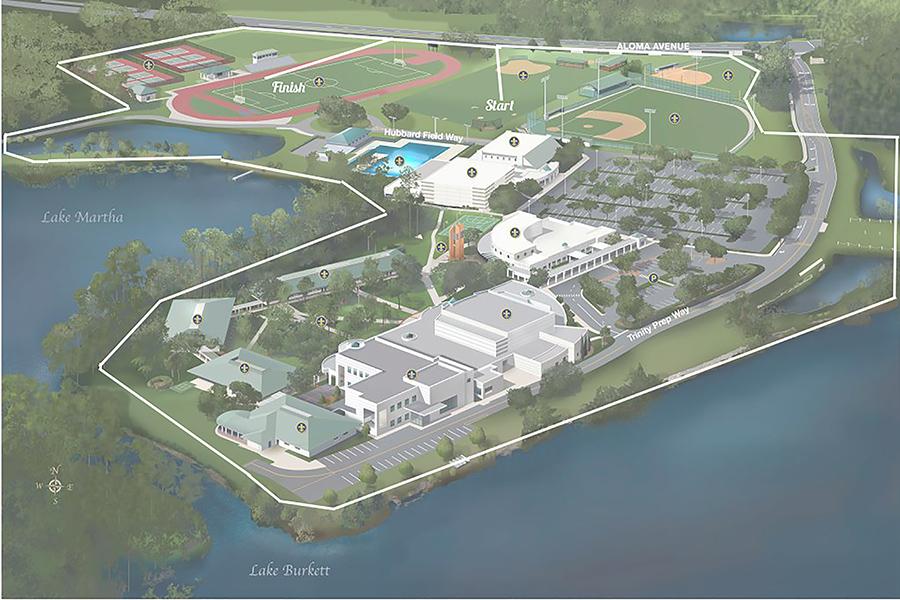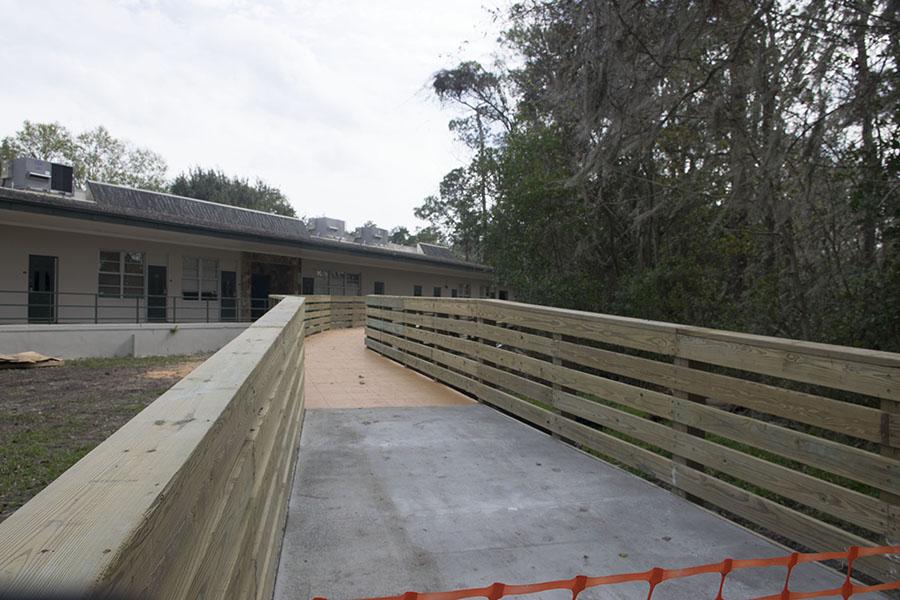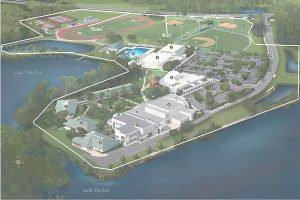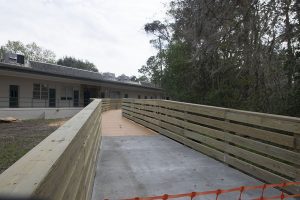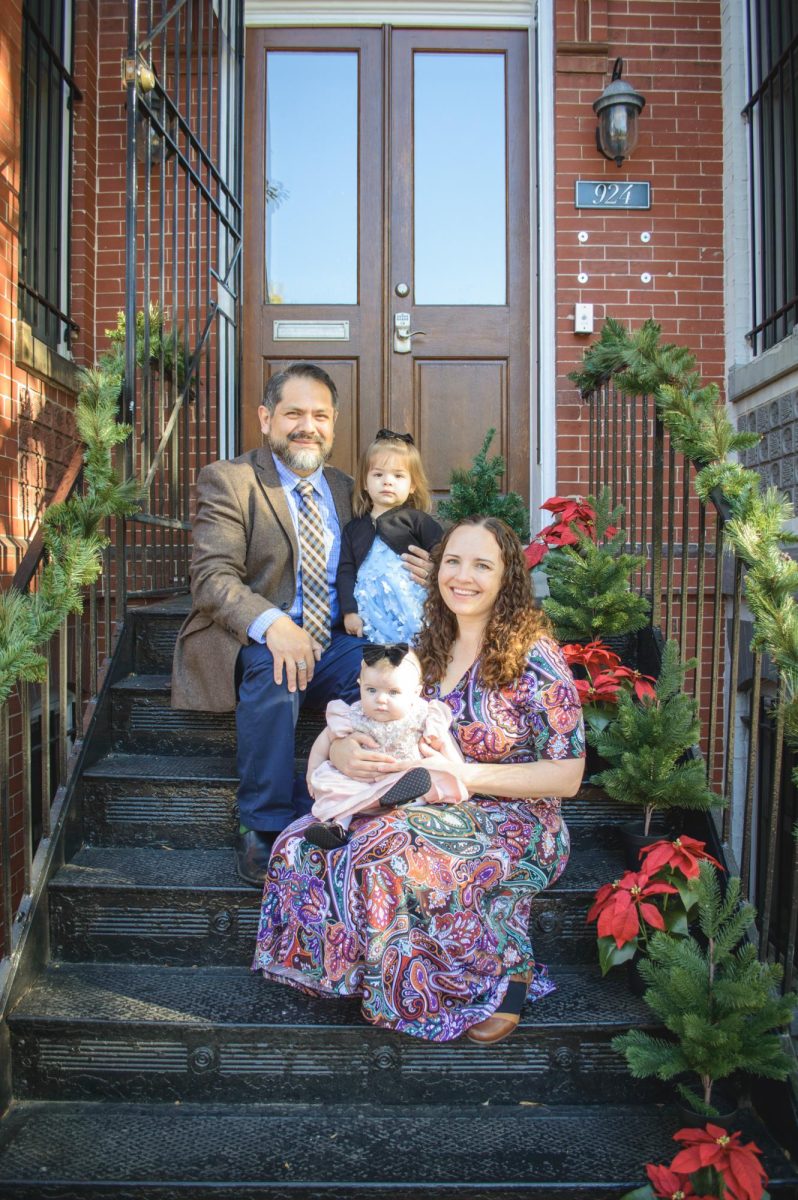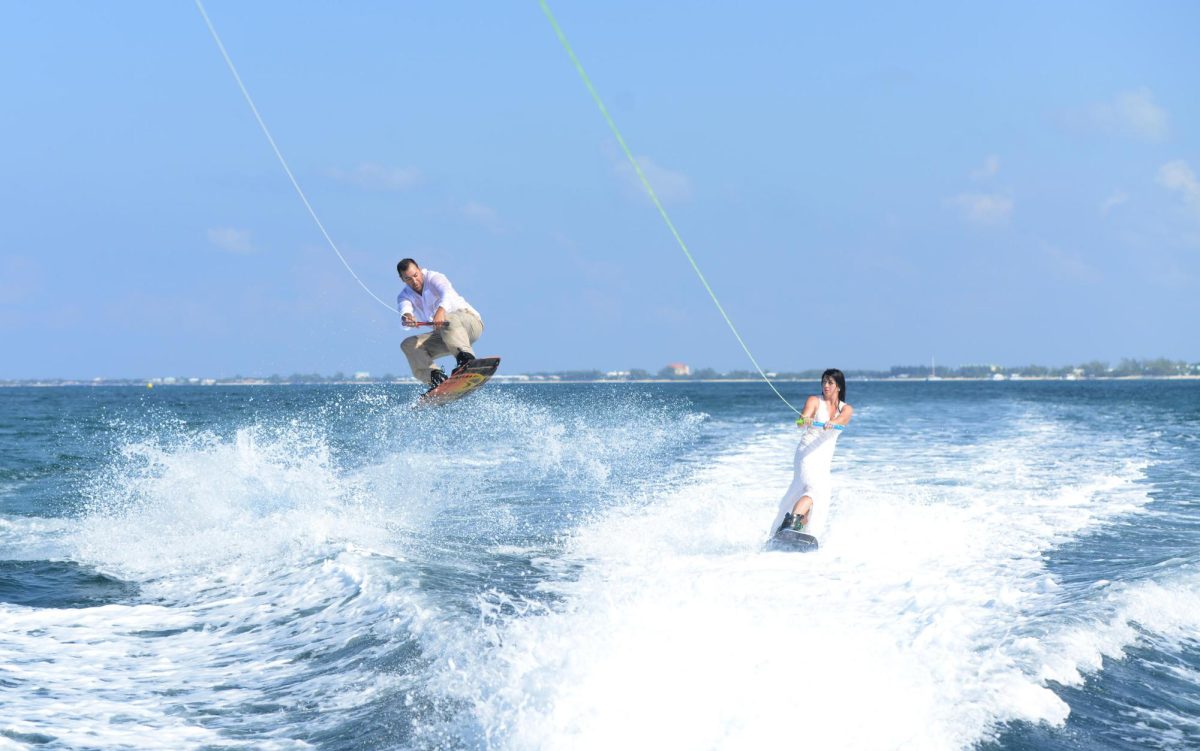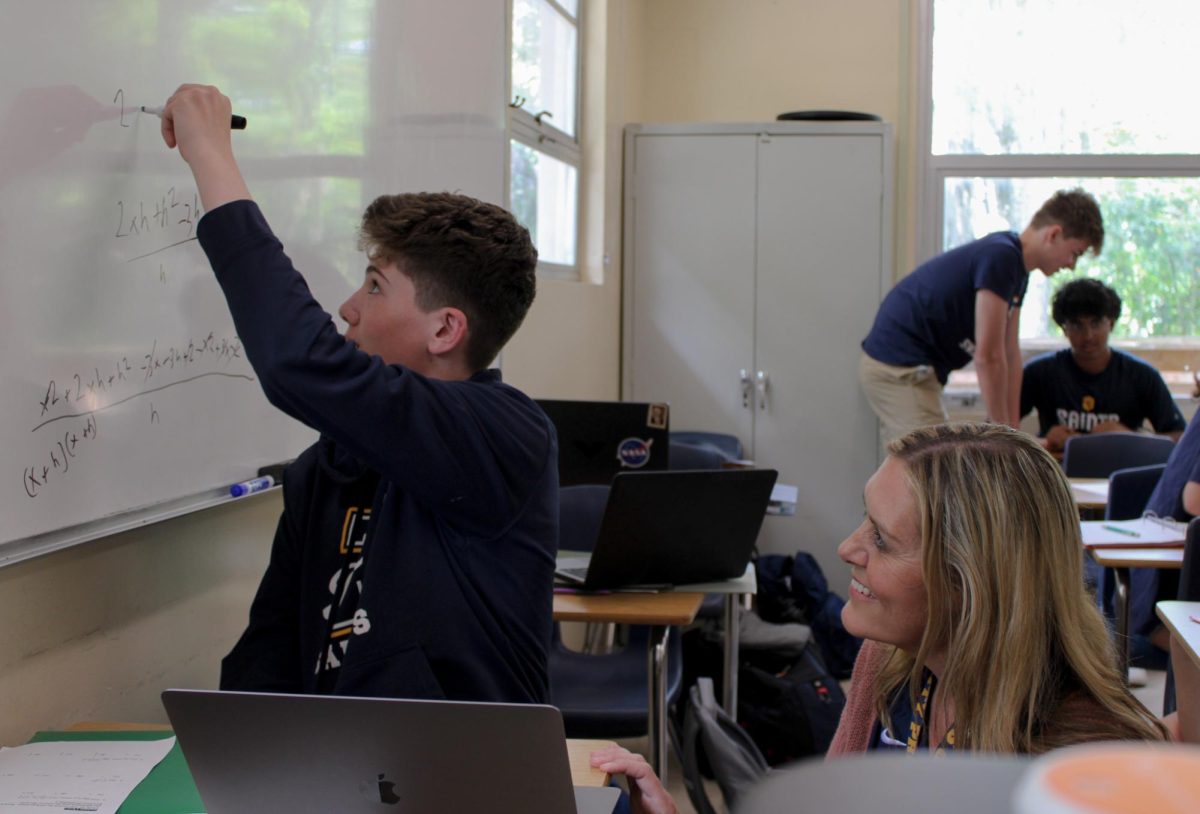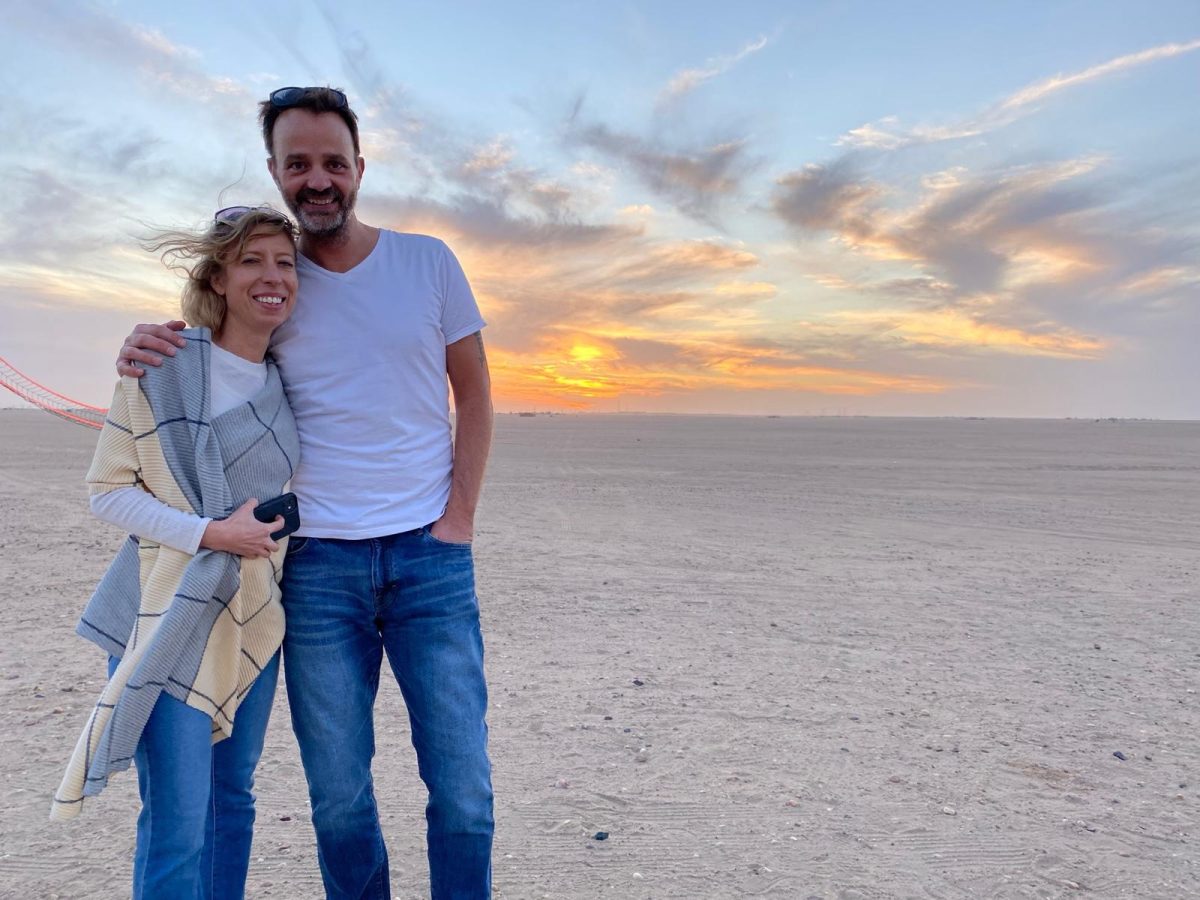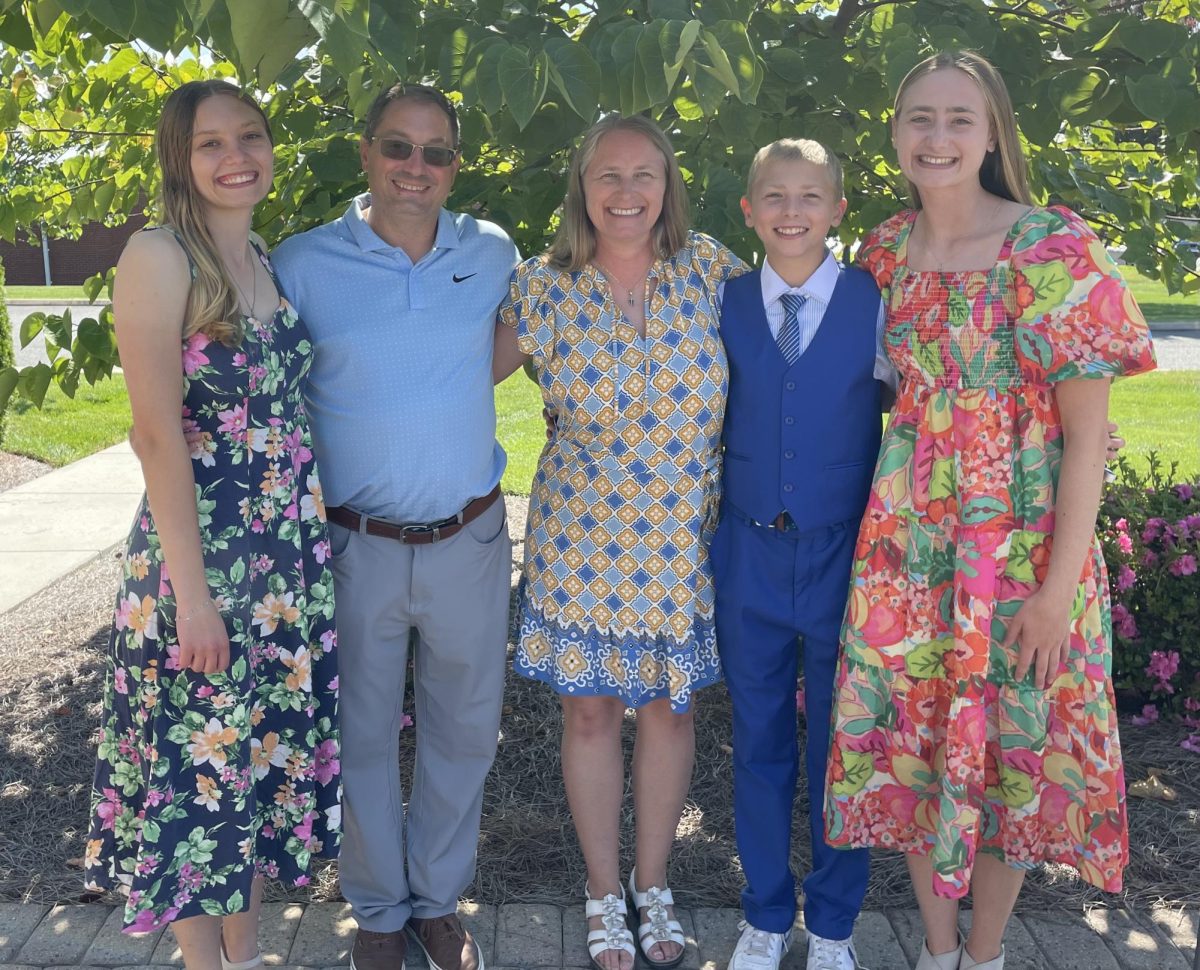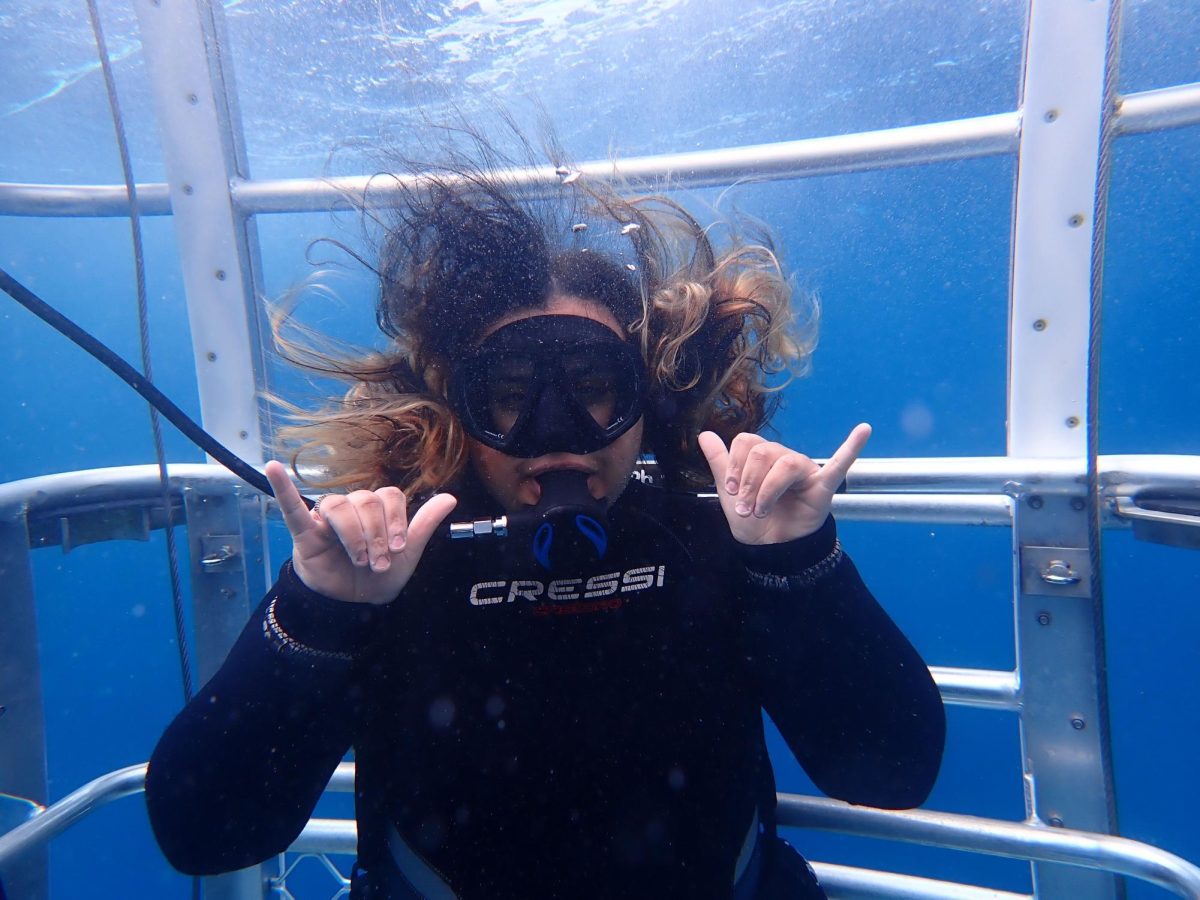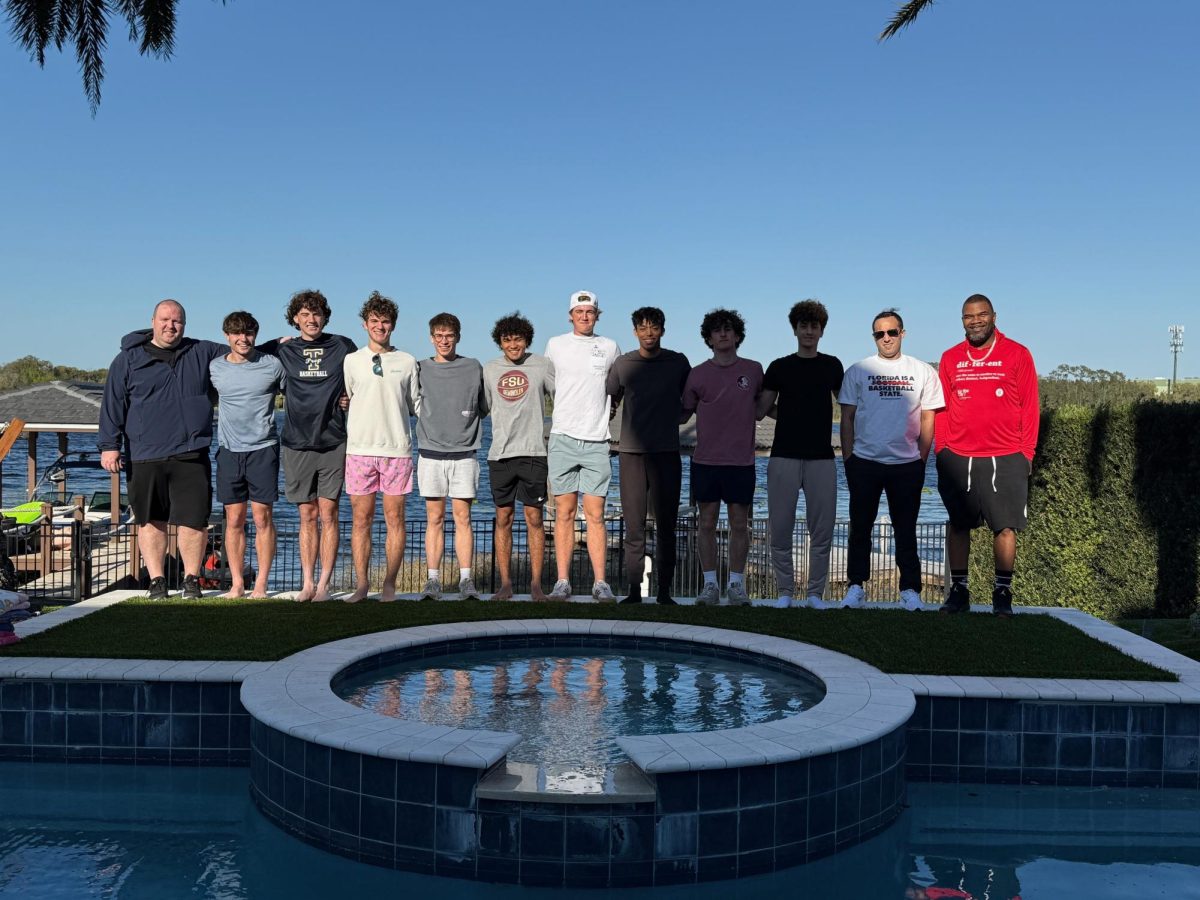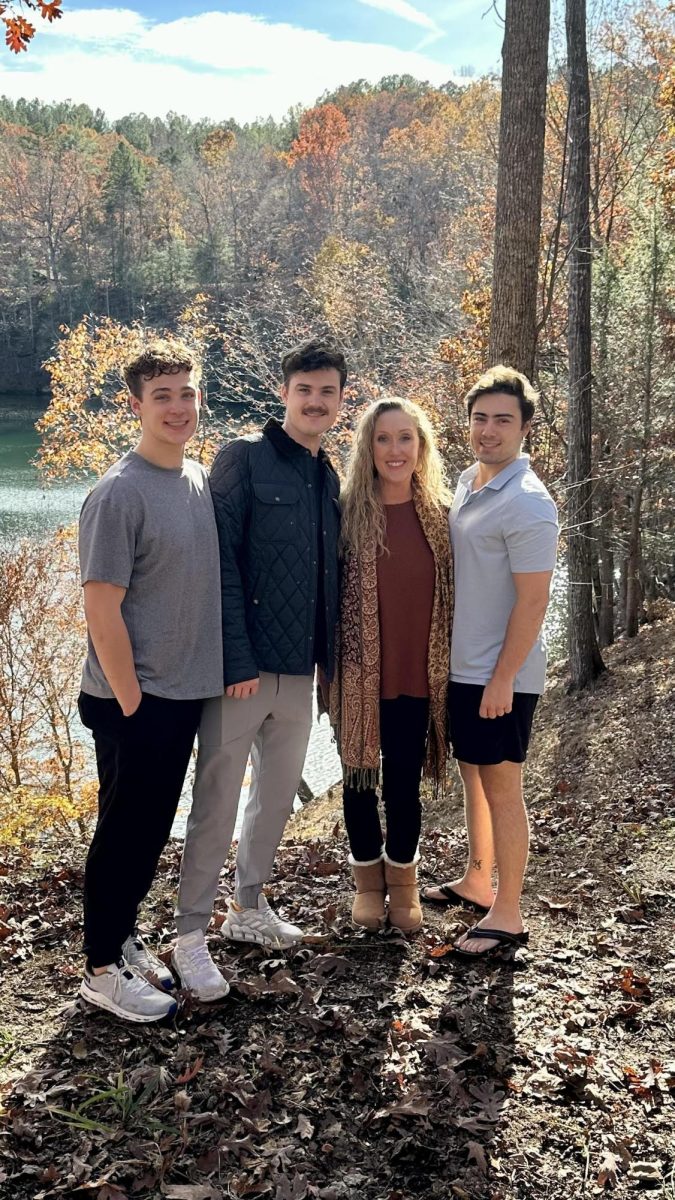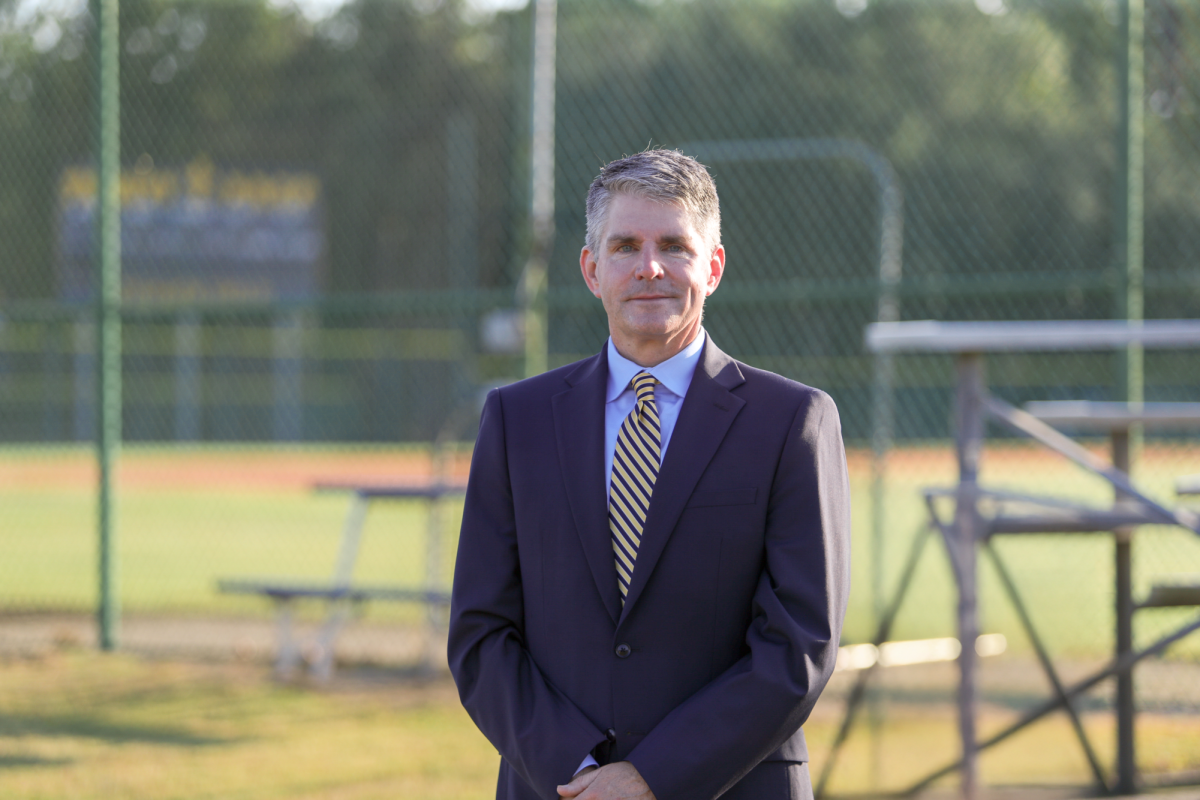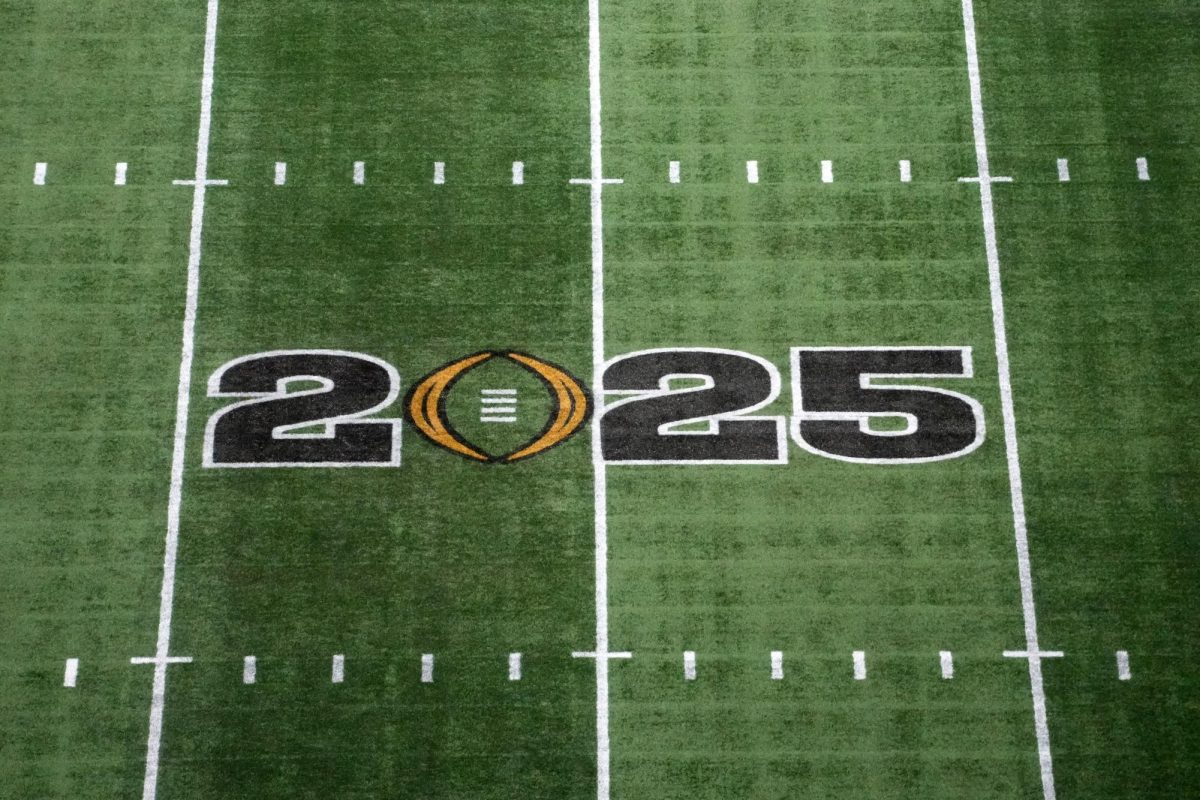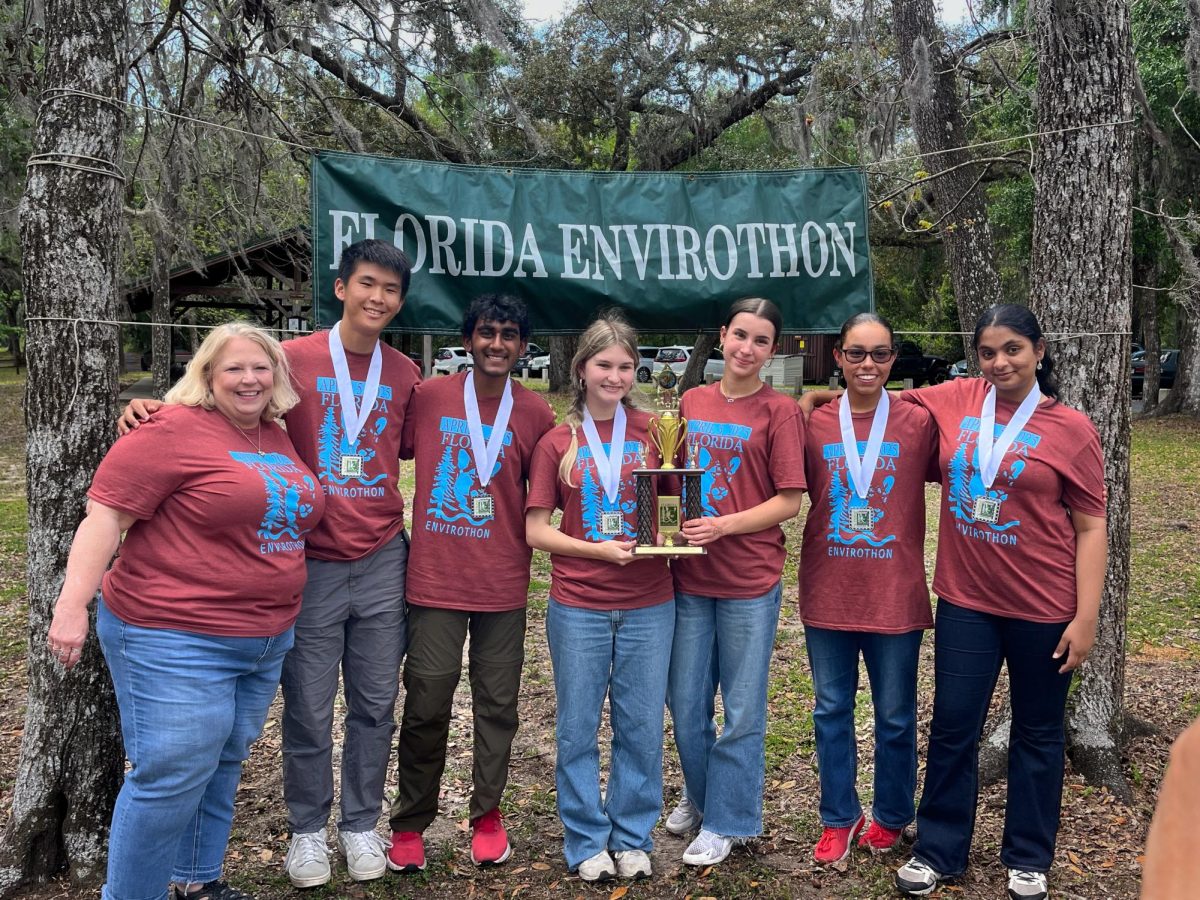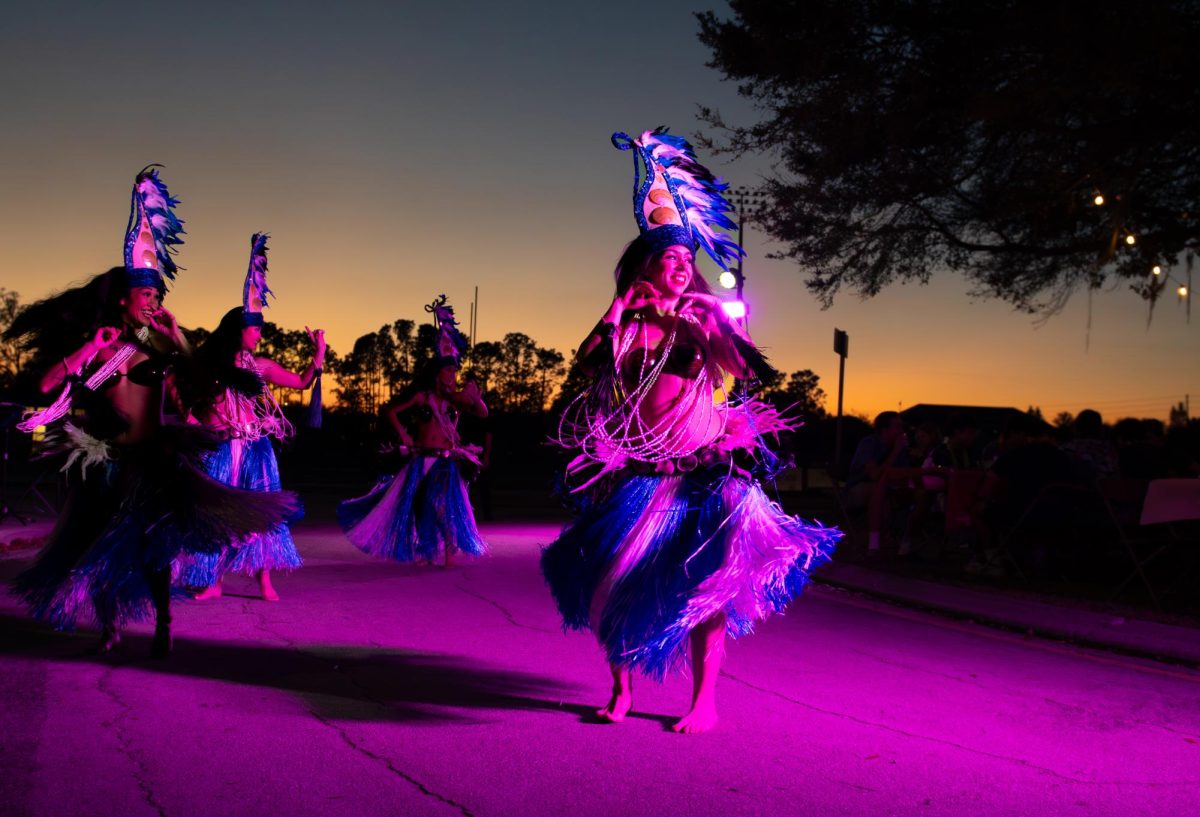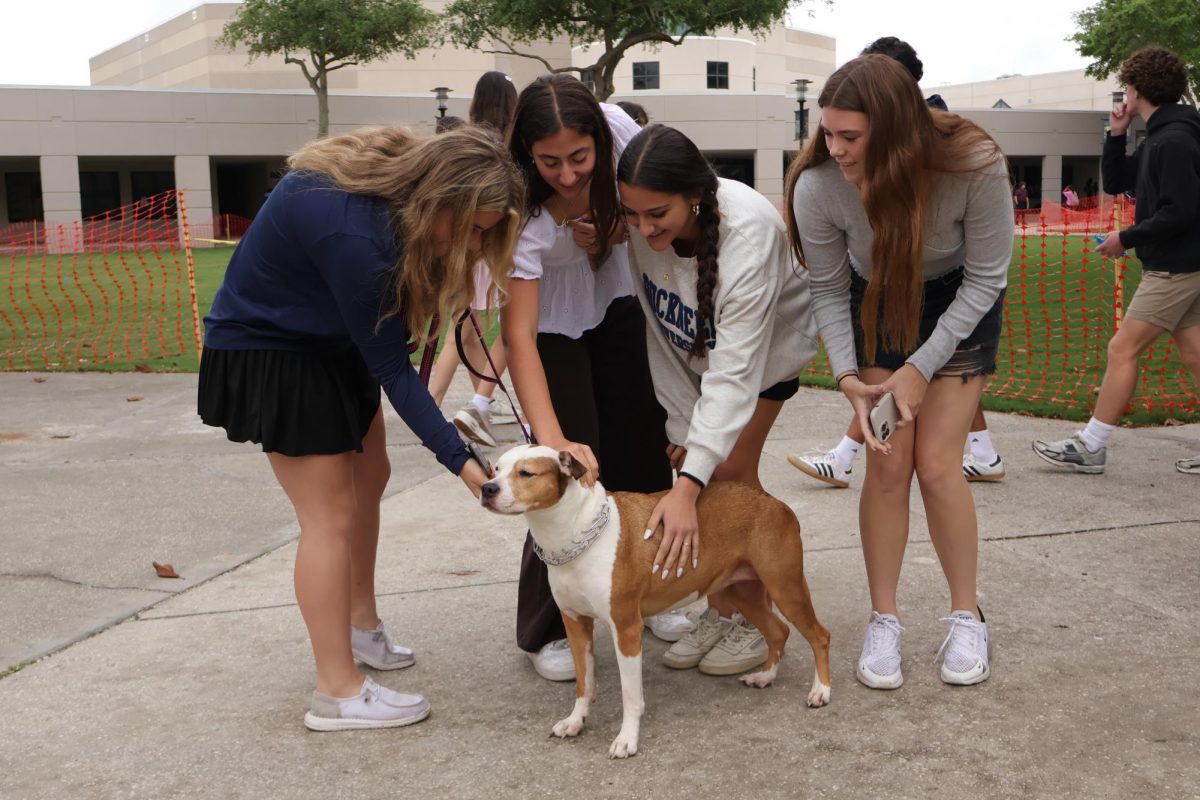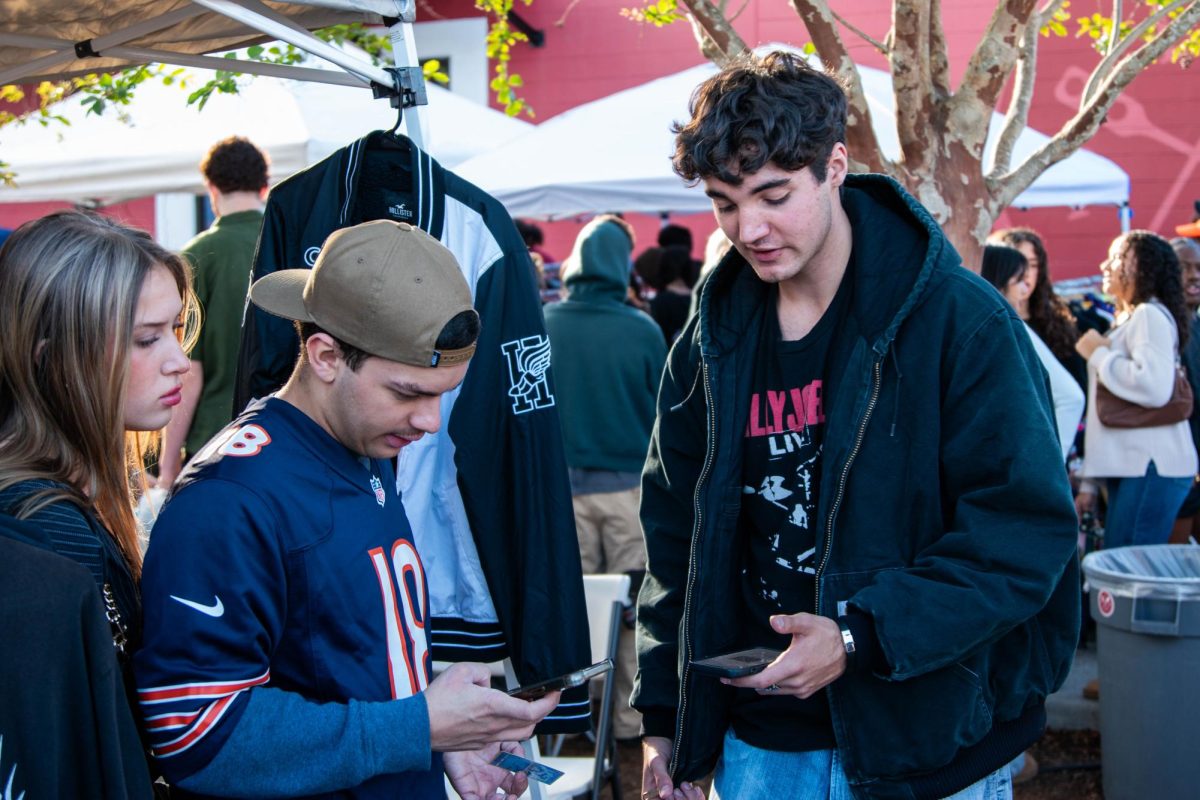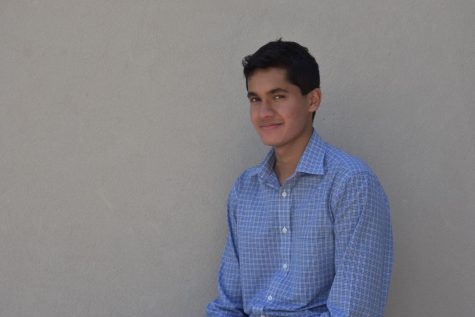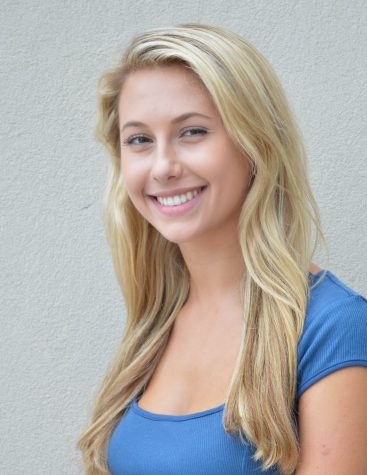Recently, the wooded area behind Holloway has undergone massive development. Upon returning from winter break, students noticed non-stop construction going on behind Holloway hall. With the cross-country team receiving its fourth state championship win, Trinity decided to upgrade the team’s current running path. Trinity rewarded the team’s fantastic accomplishments by building a bridge to navigate around Holloway and the Stewart building.
“The actual construction was within a two-month window,” Chief Development Officer Leslie McClelland said. “The part that took the longest time was the permitting process. We had to get Orange county, Seminole and Soil and Water Conservation to approve of our plans. So, it slowed us down [tremendously] last summer.”
The idea of building a bridge was part of the trial planning process started in 2010 with the purpose of creating a more extensive course for runners to compete on during the regional and district meets at Trinity. The length is 411 feet including the ramps, and more than 882 decking boards were used.
“I think it’s good that we can finally use a course that will encompass the entire campus,” Head Boys’ Varsity Cross Country Coach Kenneth Vinal said. “During my first two years here, we were able to run back there since it was dry. Eventually, due to hurricanes, it became wet, and we could no longer use it. So, it is exciting to have that opportunity open for us to use the area behind Holloway and have a big loop on campus.”
The bridge will change the course of the Cross Country trail.
“We’ve been using a three-loop course for a long time, so the new bridge will start a two-loop course,” Vinal said. “However, there is still work to be done until we can say that we have a truly dedicated Cross Country course on campus.”
The bridge was completed so runners could get to Lake Martha through less student foot traffic on the side of Holloway facing the rock. Once they arrive at the lake, the runners will run by the retention ponds, circle around back to the track through the Brokaw parking lot, go down Trinity Prep Lane and turn left on Hubbard Field Way.
The new addition to the campus begs the question as to whether students during class-time and before practice will be able to use the bridge as a short-cut.
“Without a doubt the new bridge here on campus will certainly add an interesting element to traversing across the quad and participating in cross-country,” Assistant Headmaster and Upper School Principal Dennis Herron said. “In my mind, it gets you a little bit closer to a natural habitat. It could be used by others in school to run or even for classes like the Environmental Sciences.”
Nearly 17 families have come together to raise funding to create the new cross campus trail. The school appreciates the support of the Salas family, the Cook family, the Jaworski family and the Trinity Prep Boosters who have all significantly contributed to the project.
“All the families donated approximately $170,000 for the renovation of the Cross Country trail,” McClelland said. “Our generous Trinity families were crucial in financing the bridge alongside with the Track Shack Foundation.”
Some runners are skeptical of whether the bridge will cause any complications during the races due to its dimensions.
“I feel like the bridge is a little too narrow and there are possibilities for injuries and accidents,” junior Ricky Woodruff said. “By the time we get on the bridge, we haven’t even ran a mile, and boys’ races are usually more crowded since there are more competitors. Ideally, it would have been greater if it was two feet wider since I know that there will be pushing and shoving on the bridge.”
Hundreds of runners compete at Cross Country meets and students are questioning if the bridge will be architecturally sound in high-stress situations.
“The bridge is well engineered and sturdy since it is made of wood with concrete pilings,” Vinal said. “During Cross Country season, we will have to roll out rubber mats along the entire way because runners have spikes on their shoes and we don’t want them to tear up the wood. Plus, running on concrete ramps could lead to falls since there is no trackage to prevent slippage.”
As the course unfolds and becomes a long-term version, there are still many ideas on how to enhance the trail.
“The course itself is a working progress. We still have a lot more work to do to make it clear that it is a running course,” Vinal said. “ In certain places it would be nice to have a path made of crushed limestone at least eight feet wide.”
Vinal added that there may be a possibility of placing a gravity wall along Aloma, which will serve to level out the slope by the wall to provide the runners with an even surface.
Since the trail has already been identified as a priority, adding any adjustments to the trail will not need prior approval.
“We’d always love to enhance the trail and we depend on our donor families to help us,” McClelland said. “Already, mile markers are being placed throughout the trail honoring the families who donated lead gifts. There are so many more opportunities to do more.”




